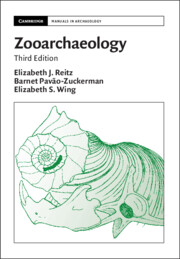Refine search
Actions for selected content:
1531 results
2 - Hopeless Consumptions
-
- Book:
- Peasants to Paupers
- Published online:
- 24 December 2025
- Print publication:
- 29 January 2026, pp 72-101
-
- Chapter
-
- You have access
- Open access
- HTML
- Export citation
Chapter 6 - Reading “Manners”
-
- Book:
- Emerson, the Philosopher of Oppositions
- Published online:
- 20 November 2025
- Print publication:
- 22 January 2026, pp 117-136
-
- Chapter
- Export citation
Two - Marriage and Gender in the Political Moment
-
- Book:
- Marriage and the Moral Imagination
- Published online:
- 12 December 2025
- Print publication:
- 22 January 2026, pp 54-90
-
- Chapter
- Export citation
Chapter 1 - Kant on Moral Universality and the Normative Foundations of Right
- from Part I - Law and Morality: Derivation or Separation?
-
-
- Book:
- Law and Morality in Kant
- Published online:
- 16 December 2025
- Print publication:
- 22 January 2026, pp 17-35
-
- Chapter
-
- You have access
- Open access
- HTML
- Export citation
Chapter 6 - Should Criminals Be Punished for Their Folly?
- from Part II - Sanctions and Coercion: A Problem for a Derivational Reading?
-
-
- Book:
- Law and Morality in Kant
- Published online:
- 16 December 2025
- Print publication:
- 22 January 2026, pp 114-128
-
- Chapter
-
- You have access
- Open access
- HTML
- Export citation
Chapter 29 - What’s In a Name?
-
-
- Book:
- Complex Ethics Consultations
- Published online:
- 22 December 2025
- Print publication:
- 22 January 2026, pp 201-208
-
- Chapter
- Export citation
Chapter 19 - Who Controls the Medical Technology Placed in Our Bodies?
-
-
- Book:
- Complex Ethics Consultations
- Published online:
- 22 December 2025
- Print publication:
- 22 January 2026, pp 129-134
-
- Chapter
- Export citation
4 - The Square Peg
-
-
- Book:
- The Ethics of ESG
- Print publication:
- 22 January 2026, pp 111-134
-
- Chapter
- Export citation
Chapter 25 - When a Fight for Life Initiates a Search for Trust
-
-
- Book:
- Complex Ethics Consultations
- Published online:
- 22 December 2025
- Print publication:
- 22 January 2026, pp 169-176
-
- Chapter
- Export citation
Chapter 4 - Kant’s Right as Normatively Independent
- from Part I - Law and Morality: Derivation or Separation?
-
-
- Book:
- Law and Morality in Kant
- Published online:
- 16 December 2025
- Print publication:
- 22 January 2026, pp 75-92
-
- Chapter
-
- You have access
- Open access
- HTML
- Export citation
Introduction
-
-
- Book:
- The Ethics of ESG
- Print publication:
- 22 January 2026, pp 1-20
-
- Chapter
- Export citation
Introduction
-
-
- Book:
- Hume's <i>A Treatise of Human Nature</i>
- Published online:
- 05 December 2025
- Print publication:
- 08 January 2026, pp 1-10
-
- Chapter
- Export citation
17 - Virtues
- from Part II - Theological Themes
-
-
- Book:
- The Origins of Scholasticism
- Published online:
- 18 November 2025
- Print publication:
- 08 January 2026, pp 464-494
-
- Chapter
- Export citation
Chapter 6 - Ethics in Plotinus and His Successors
- from Part II - Ethics
-
- Book:
- The Ladder of the Sciences in Late Antique Platonism
- Published online:
- 08 December 2025
- Print publication:
- 08 January 2026, pp 77-97
-
- Chapter
- Export citation

Zooarchaeology
- Coming soon
-
- Expected online publication date:
- January 2026
- Print publication:
- 18 December 2025
-
- Textbook
- Export citation
Human Genetics Society of Australasia Position Statement: Online or Direct-to-Consumer Genomics Testing
-
- Journal:
- Twin Research and Human Genetics , First View
- Published online by Cambridge University Press:
- 22 December 2025, pp. 1-5
-
- Article
-
- You have access
- Open access
- HTML
- Export citation
Counterfeits as Social Goods: The Ethics of Chinese Fashion in Mozambique
-
- Journal:
- African Studies Review , First View
- Published online by Cambridge University Press:
- 19 December 2025, pp. 1-21
-
- Article
-
- You have access
- Open access
- HTML
- Export citation
Medical obituaries and compulsive reading
-
- Journal:
- BJPsych Bulletin , FirstView
- Published online by Cambridge University Press:
- 19 December 2025, pp. 1-5
-
- Article
-
- You have access
- Open access
- HTML
- Export citation
A crisis-induced bricolage policy in Australia: ethical contradictions in policymaking in times of crisis
-
- Journal:
- Journal of Social Policy , First View
- Published online by Cambridge University Press:
- 18 December 2025, pp. 1-19
-
- Article
-
- You have access
- Open access
- HTML
- Export citation

Making Medical Progress
- History of a Contested Idea
-
- Published online:
- 12 December 2025
- Print publication:
- 20 November 2025
-
- Book
-
- You have access
- Open access
- Export citation
